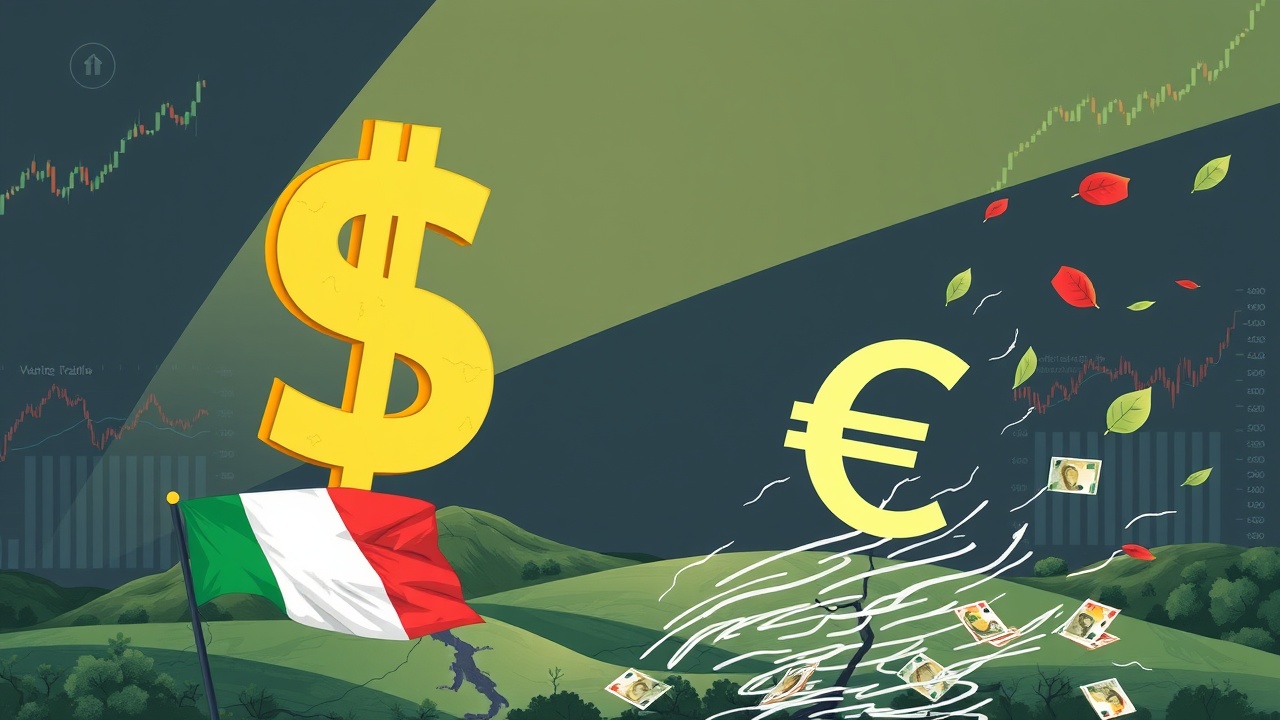Introduction
Italian Economy Minister Giancarlo Giorgetti has raised alarms about the potential risks posed by dollar-backed stablecoins to the euro, suggesting they may present a more significant challenge than existing trade conflicts. In a recent speech at an asset management conference in Milan, Giorgetti articulated the need for immediate EU action to mitigate the allure of these dollar-pegged cryptocurrencies, especially as they gain traction among European consumers.
Regulatory Landscape and Economic Implications
Giorgetti pointed out that the evolving regulatory landscape for cryptocurrencies in the United States, particularly related to dollar-denominated stablecoins, could pose substantial competition for the euro. He stated they offer a convenient and efficient method for cross-border transactions that European regulators cannot overlook. He criticized the current disarray in the EU’s payment systems and underlined the critical need for strategies that enhance the euro’s position on the international stage.
U.S. Legislation on Stablecoins
His remarks coincide with the ongoing consideration in the U.S. Congress of two notable pieces of legislation related to stablecoins: the Stablecoin Transparency and Accountability for a Better Ledger Economy (STABLE) Act and the Guiding and Establishing National Innovation for U.S. Stablecoins (GENIUS) Act. These proposed laws would mandate that stablecoin issuers secure their tokens with U.S. Treasury bonds. Critics, including Chinese economist Zhang Ming, assert that such requirements are aimed at reinforcing the dominance of the U.S. dollar.
Potential Risks of Dollar-Pegged Stablecoins
Giorgetti expressed concern that while trade disputes currently dominate discussions, the emergent U.S. policy on cryptocurrencies is equally, if not more, perilous. He stated,
“Focus largely rests on trade tariffs, yet the implications of the new U.S. cryptocurrency framework, especially regarding dollar-pegged stablecoins, could be more consequential.”
The minister also pointed out the potential advantages that dollar-pegged stablecoins could offer to European consumers, noting their appeal as a low-risk vehicle for savings and an efficient medium for international payments—achievable without the necessity of establishing a bank account in the U.S. He warned,
“Their increasing attractiveness for residents in regions with volatile currencies may not be fully understood, especially among eurozone residents.”
Response from the European Central Bank
In light of these developments, the European Central Bank (ECB) is reportedly pushing forward with the development of a digital euro, conceived as a central bank digital currency that aims to shield existing currencies from the encroaching popularity of stablecoins. The envisioned system would allow European consumers to hold digital euro accounts directly with the ECB, facilitating online purchases and cash transfers between individuals via collaborations with local payment service organizations. Giorgetti emphasized the significance of the digital euro, stating,
“Implementing this currency will be crucial to ensuring European citizens do not have to look to foreign alternatives for fundamental payment services.”
Concerns Among European Banks
However, the rollout of the digital euro is not without its adversaries, particularly among European banks that fear a switch to digital euro wallets could siphon off significant customer deposits, jeopardizing their liquidity and profitability. Despite such concerns, Giorgetti’s call for the EU to create a robust digital payment framework reflects the pressing need to compete with dollar-based alternatives and maintain the euro’s global relevance and strength.




